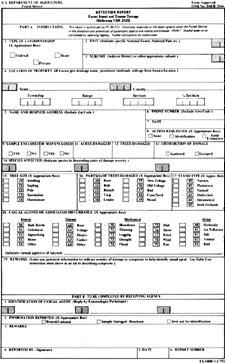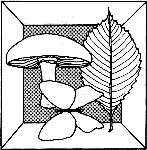|
William H. Hoffard – Entomologist, Asheville, N.C., Field Office,
Robert L. Anderson – Pathologist, Asheville, N.C., Field Office, and
William H. Sites – Pathologist, Asheville, N.C., Field Office.
USDA Forest Service, Southeastern Area, State and Private Forestry, 1720 Peachtree Road, N.W., Atlanta, Ga. 30309.
|
|
Shipping of Insect and Disease specimens
|
Ship all material - including insects , fungi, plant material and soil- in a sturdy carton or mailing tube. Cartons are preferable for insect specimens. Pad the interior container with 2 to 3 inches (5to 8cm) of packing material surrounded by another box. Make sure it is protected from moisture. Include in the specimen box a description of the contents, host and host environment, your address and that of the recipient. Forest Service form 3400-1(figure13) is one convenient checklist that can be used. Seal the container with cord or fiber tape. Place the words "CONTENTS: PLANT MATERIAL (or DEAD INSECTS ) OF NO COMMERCIAL VALUE" on the package. Keep boxes with perishable specimens in a cool place until delivery to the carrier. If living plants or pests are among the contents, obtain a permit from the USDA's Animal and Plant Health Inspection Service (APHIS) and attach it to the package.
|

Figure 13 – Forest Service Form 3400-1. |
If you have perishable specimens or a large number of preserved insects, contact the receiver to arrange for a convenient shipping date. Then, ship by the fastest means possible and early in the week to ensure the specimens are not held over the weekend.
[ Contents ]
[ Previous ]
[ Next ]
[ Home ]
|




